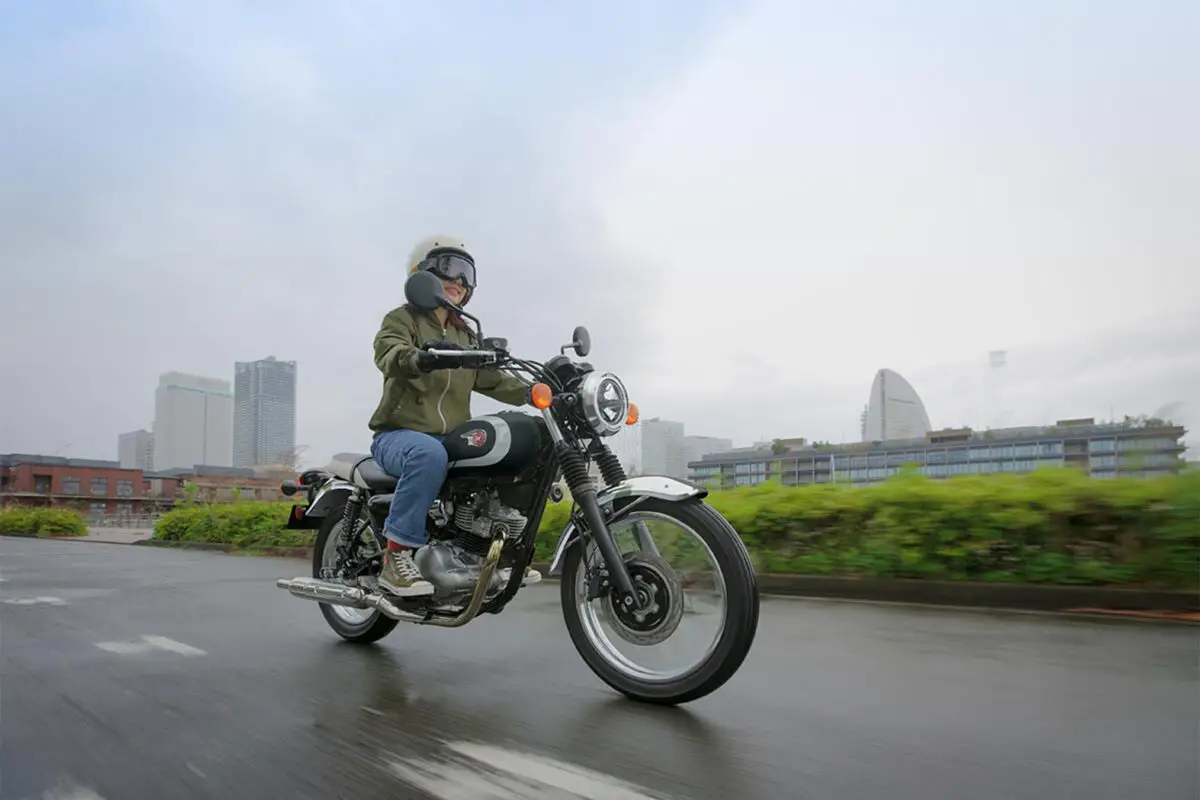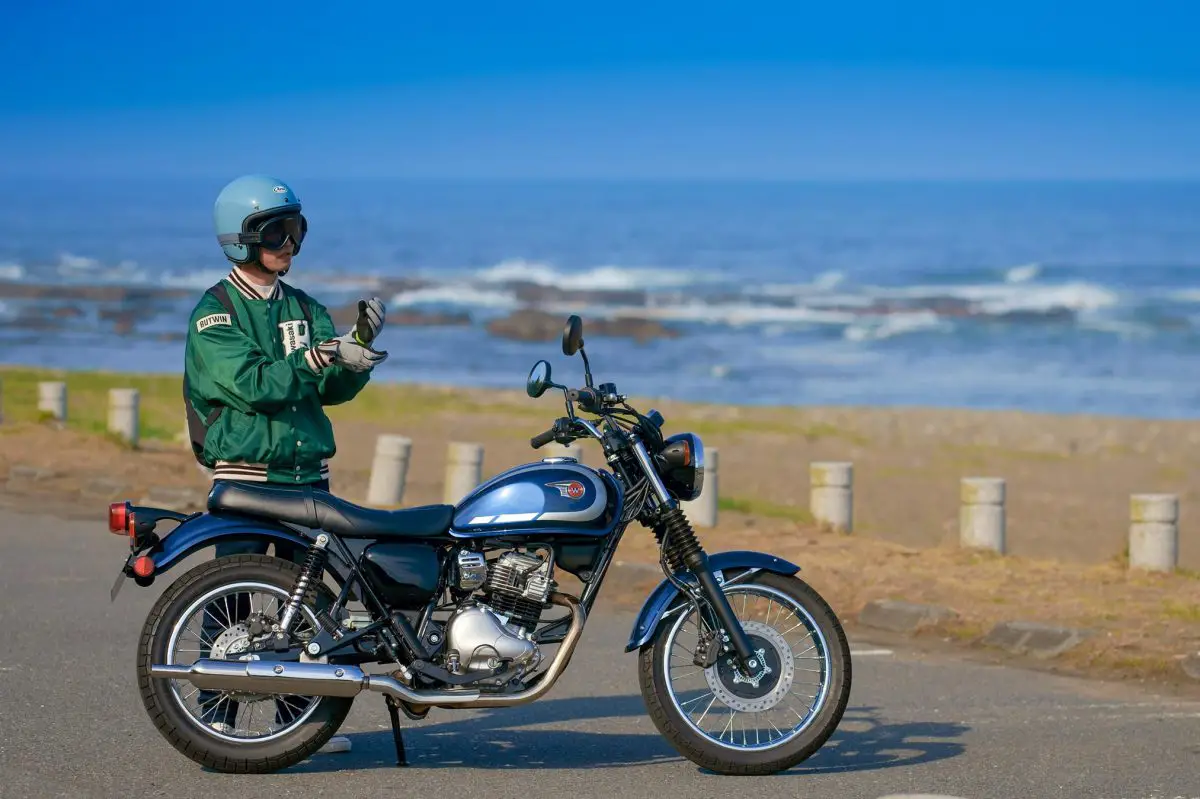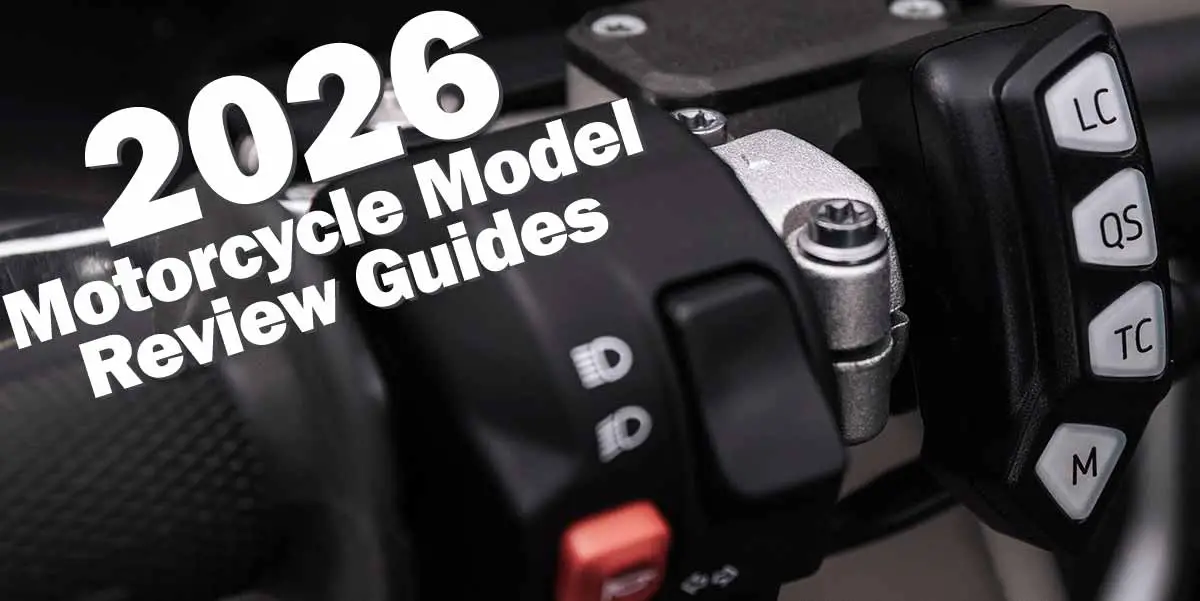Beginner’s Guide to Motorcycling
Riders Write: Andrew Durling
New Rider Suggestions
I decided to write a blurb to help out new riders, sharing advice, tips, and stories I’ve learned along the way.
Start with Training
If I could do it over again, I’d go to riding school first. I plan to attend in spring 2003 before I ride.
Local clubs and riders can give great opinions on schools. The internet helps, but trial and error sums it up.
Gear Matters
- Helmets: Snell-approved helmets meet stricter standards than DOT. Look above the bottom shelf in shops. Deals exist if you’re flexible on style and color, I found full-face Snell helmets for $99 CAD.
- Boots: Army surplus boots can be a bargain, $30 for steel-toe, steel-shank boots worth $200 new. They’re durable, polishable, and don’t impede controls.
- Clothing: Don’t ride in shorts and t-shirts. There are two kinds of riders: those who have dumped their bikes, and those who will. Dress for the slide, not the ride.
Choosing a Beginner Bike
I lucked out with my 1981 Honda CB400T. It’s forgiving if I twist the throttle too much, light, easy to maintain, and has decent brakes.
At 200+ lbs and 5’9”, it suits me well. I got extras (cover, lock, etc.) with only 12,000 km on the bike.
Don’t start with a 1200cc monster you can’t handle. In Calgary, accidents rise every summer, often involving young riders on bikes too big for them.
Be smart, you can always upgrade. Small bikes hold value; buy in fall, sell in spring, and you may even profit.
Final Thoughts
As a new rider, ask yourself: which bike are you most likely to dump, your sixth after years of riding, or your first?
Even if you can afford a new bike, wait until you have experience. Shiny chrome and fiberglass get expensive when you “customize” them by accident.
— Andrew Durling
Choosing a Beginner Bike: Parameters
I’ve gotten emails asking what to look for in a beginner bike. Here’s the order I considered:
- Size
- Style
- Condition
- Cost of repairs to make it safe
- Price of the bike
Buyer Beware
Many sellers claim their bike “ran when stored.” I saw plenty of these so-called treasures.
If it sounds too good to be true, it probably is. Look around the storage area, is it a workshop or a junkyard?
Sellers often admit what’s wrong, but if they really knew, why wouldn’t they fix it and sell for more?
Tips for Inspecting a Used Bike
- Bring a buddy who rides, it distracts the seller and gives you time to inspect.
- Check for dents, scratches, poor frame repairs, leaks, and wiring issues.
- Before test rides, check the oil. It shows you how, and protects you if the engine seizes mid-test.
Lesson: Cover your ass. Don’t let bike fever blind you to red flags.
— Andrew Durling
THE BIKE!
One of the first questions every new rider asks, sometimes on forums, sometimes in hushed tones at the dealership, is:
“What bike should I buy?”
Here’s the truth: there’s no single answer. If you’re asking strangers to pick your bike, you might not have fully grasped
what motorcycling is about yet. But don’t worry, we’ve all been there. What we can tell you is this: if it’s your first time
throwing a leg over a motorcycle, a Gold Wing or a Ninja ZX‑11 probably isn’t the right choice. Believe us, you’ve got plenty
of time in your life to own ten dream bikes. Start small, start smart.
As a beginner, you’re more likely to drop your bike, and sometimes on yourself. So keep the costs down. Buy used.
Buy a rat bike. Something without too much plastic. Go for light, easy to handle, and not too powerful.
The sweet spot for a first bike? Somewhere in the 250–600cc range. You can usually find a solid used one for $1,000–$2,000.
That’s cheaper than a semester of college, and way more fun.
Don’t get dazzled by the latest “FGXSRZ‑Turbo‑Hyper‑Mega” the magazines rave about. Comfort, fit, and feel matter more than
a 0.2‑second difference in the quarter mile. Handlebar reach, seat width, peg height, airflow, these little details become
huge after 100 miles in the saddle. Read reviews, sure, but pick the bike that feels right for you.
Motorcycling is an intimate dance between rider and machine. Choose your partner wisely.
– Ravi
Lisa’s Take: Don’t Be a Squid
I wrote this with two kinds of people in mind: the ones who say, “Why take a class? Here’s the brake, here’s the gas,
what more do you need to know?” And yes, they actually mean it. My mission? Nip those squidly tendencies in the bud.
That’s why my tone here is heavy‑handed. I’ll tell you how not to be a squid, and Conrad can tell you what you really need to know.
This guide is long and wordy, sorry, not sorry. It’s basic, it’s blunt, and it’s meant to cover the essentials.
If it insults your intelligence, good. That means you’re paying attention. At the end, I’ve even included some cheap sources
for the gear you’ll need.
1) Take the MSF Course 🚦
Before you buy a bike, take the Motorcycle Safety Foundation course. It’s a multi‑day program with both classroom
and riding sessions. Even if you’ve ridden before, take the basic class. Experienced pros will teach you how to ride, turn, brake,
avoid accidents, basically, how not to get crunched.
Once you’ve got some miles under your belt, you can take the advanced class next year. Think of it as leveling up.
2) Buying a Helmet
Get one. Get one immediately. And make it a full‑face helmet. They offer more protection than half‑helmets,
and your jaw will thank you if you ever test gravity. Order early, or you’ll be stuck staring at your new bike while waiting
for UPS to deliver your lid.
Dealers will sell you one on the spot, but expect to pay $50–$80 more than mail‑order. Still, don’t skimp.
This is not the place for a $50 bargain bin special, unless you’ve got a $50 head. A solid choice?
The Shoei RF‑200, around $140 by mail order.
Fit is everything. The pads should touch your cheeks firmly. It should be snug enough that you can’t roll it off,
but not so tight it pinches your forehead. Sizes vary by brand, so try on the exact model in person before ordering online.
If it doesn’t fit, return it. Simple.
Myths? Helmets don’t restrict vision. They don’t kill your hearing, they actually help you hear over the engine.
Neck injuries? The jury’s out, but I’ll take my chances. Wear one for a month, and it’ll feel as comfy as your old fuzzy blanket.
3) Safety Gear 🛡️
Want to ride safe? Then suit up from head to toe, every ride, every time.
Yes, even on hot days. Yes, even for that “just a quick run to the store.”
The road doesn’t care how far you’re going. Good gear protects you from cuts,
abrasions, flying glass, and the pavement’s not-so-friendly embrace.
Many riders spend as much on gear as they do on their first bike, and that’s money well spent.
Jacket
Skip the fashion leather. You want a motorcycle-grade leather jacket, thick, tough, and built to slide.
Expect to spend $300+. Fit should be snug enough not to ride up in a crash, but roomy enough for a sweater underneath.
Racing leathers are the gold standard, but pricey. Alternatives? Aerostich Cordura/Gore‑Tex gear: waterproof, breathable,
and abrasion-resistant. Bonus: you won’t smell like a wet cow in the rain.
Pants
Leather or textile riding pants are ideal. Jeans? Forget it. Studies show denim lasts about four feet in a slide before
your skin takes over. Aerostich pants zip to jackets (~$300) or come as a one-piece suit (~$600). Leather suits also zip
together. Fashion leather? Nope. Leave that for the nightclub.
Footgear
Boots matter. High-quality leather riding boots with ankle protection are best. No heels, no sandals, no dress shoes.
Sneakers? Only if they’re high-tops laced tight, and even then, they’ll probably fly off in a crash. Protect your feet;
you’ll need them to stop at red lights.
Gloves
Gloves give you better throttle control and save your hands in a fall. At first, they’ll feel weird, but you’ll adapt fast.
Leather is king. Saddlery shops can be a hidden gem if your local cycle shop doesn’t stock your size.
Eye Protection
No full-face helmet? Then you need goggles. Sunglasses won’t cut it, the wind will blast right under them.
Even with a helmet visor, carry sunglasses or a tinted shield for daytime glare. Pro tip: military surplus aviator-style
glasses have straight earpieces that slide under helmets easily. Real Ray-Bans, not gas station knockoffs.
Passengers
If you carry a passenger, you’re responsible for their gear too. Don’t let anyone guilt you into giving them a ride in shorts
and flip-flops. Keep your old gear as a backup passenger set. And honestly? Wait at least six months before carrying anyone.
Learn to handle yourself first.
4) Insurance 💸
Same advice as gear: get it now. Most car insurance companies don’t cover motorcycles, or only cover small ones.
Motorcycle insurance is based on engine size, your age, and your record. A 25‑year‑old on a GS450 might pay under $100/year.
An 18‑year‑old on a Ninja ZX‑750? Try $1,000/year. Ouch.
In a car vs. bike accident, guess who racks up the medical bills? You and your passenger.
The car may take more property damage dollars, but your body takes the real hit.
Choose coverage wisely, don’t cheap out on your own skin.
5) Tools & Manual 🔧
Start building two toolkits: one for the garage, one for the bike. Even brand-new bikes need adjustments.
If you’re not willing to wrench at all, maybe consider a Volvo instead. Motorcycles aren’t cars, you can’t just
change the oil once a year and forget about it. Cables, chains, mirrors, and linkages all need regular love.
A new bike saves you from big repairs early on, but you’ll still be adjusting clutch cables, brake cables, and chains.
Unlike cars, there isn’t a shop on every corner, and parts can take weeks to arrive. Even if you’ve got money to burn,
sometimes you’ll have no choice but to DIY. The good news? Bike repair is easier and more fun than car repair.
Order a Clymer repair manual as soon as you get your bike (~$15). Factory service manuals are even better if available.
Hardcore riders keep spare parts on hand to avoid month-long waits for a $10 widget. That’s advanced stuff, but the point is:
be prepared. A well-stocked toolkit is as essential as your helmet.
Appendix: Gear & Parts Resources 📦
Once you’ve got your first bike and your first set of gear, you’ll quickly discover the next great truth of motorcycling:
you can never have too many catalogs, too many parts sources, or too many options for jackets, boots, and manuals.
Here’s a curated list of mail‑order and specialty houses that riders have relied on for years.
Always support your local dealer first, they’re the ones who’ll be there when you need them most.
But if you can’t find what you need locally, these folks can help.
Parts Dealers
Always check with your local dealer first, your business keeps them alive, and they’ll be there when you need help.
but half the fun is discovering them yourself. Trust me, there’s no shortage of folks
ready to take your money and make you even more unwilling to part with your bike than you already are.And yes, I know this might sound like a mountain of stuff to think about. Helmets, jackets, boots,
insurance, manuals, tools, catalogs, it can feel like the sport is more complicated than it’s worth.
Nothing could be further from the truth!
Motorcycling is simple at its core: you, your machine, and the open road.
The gear, the prep, the planning, that’s just the scaffolding that keeps you safe and confident
while you chase the real reward: freedom, adventure, and the grin you can’t wipe off your face
after a good ride.
So gear up, ride smart, and enjoy the journey. The rest will fall into place.





